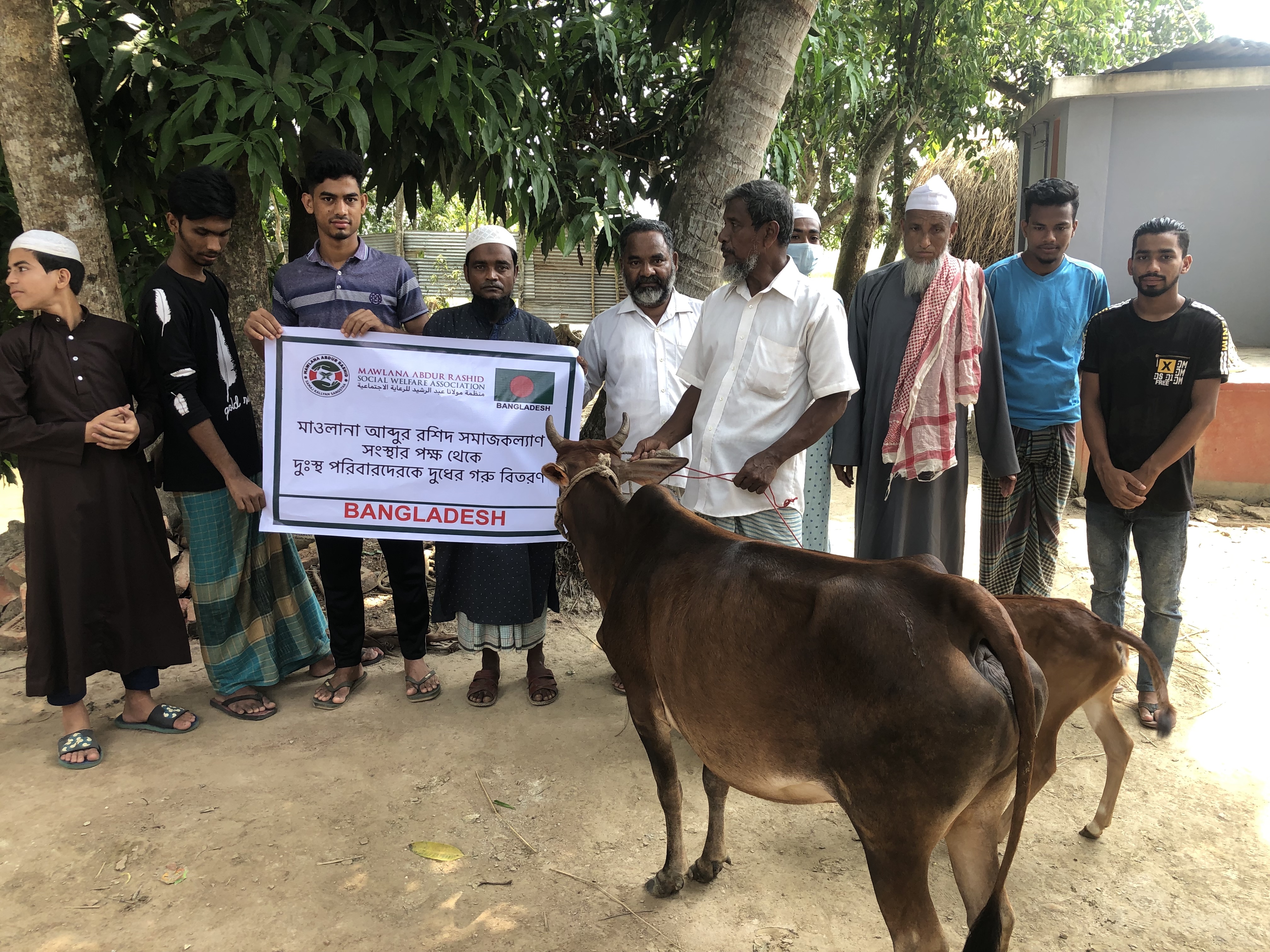
Distribution of milk cows
Mawlana Abdur Rashid Social Welfare Association MARSA distribute of milk cows to needy families can be a meaningful way to support sustainable livelihoods. Here's a general plan to help you get started:
1. Needs Assessment
- Identify Beneficiaries: Work with local organizations, community leaders, or social workers to identify families in need. Focus on those who have experience or interest in animal husbandry.
- Survey: Conduct a survey to assess the suitability of families for receiving and caring for cows, considering factors like land availability, knowledge of cow care, and access to veterinary services.
2. Funding and Resources
- Fundraising: Secure funding through donations, grants, or partnerships with NGOs, government programs, or private organizations.
- Cost Estimation: Calculate the costs of purchasing cows, transportation, training, veterinary care, and ongoing support.
3. Selection of Cows
- Quality Cows: Choose healthy, high-yield milk cows that are well-suited to the local climate and conditions.
- Veterinary Check: Ensure cows are checked by a veterinarian before distribution to prevent the spread of diseases.
4. Training and Support
- Training Programs: Provide training to the recipient families on cow care, feeding, milking, and hygiene.
- Ongoing Support: Arrange for regular veterinary check-ups and create a support system for ongoing guidance on animal husbandry.
5. Distribution Event
- Logistics: Plan the distribution day with all necessary arrangements, including transportation of cows, identification verification of beneficiaries, and safety measures.
- Ceremony: Consider holding a small ceremony to mark the distribution, involving community leaders, donors, and local media to raise awareness and encourage further support.
6. Monitoring and Evaluation
- Follow-Up: Regularly monitor the well-being of the cows and the impact on the families. Provide additional support as needed.
- Impact Assessment: Evaluate the long-term impact on the beneficiaries' livelihoods, health, and economic situation.
7. Sustainability and Expansion
- Breeding Programs: Encourage breeding programs to sustain and expand the initiative within the community.
- Community Involvement: Engage the broader community in supporting the initiative, perhaps through cooperative models or shared resources.
This approach not only provides immediate relief but also empowers families to achieve long-term economic stability
